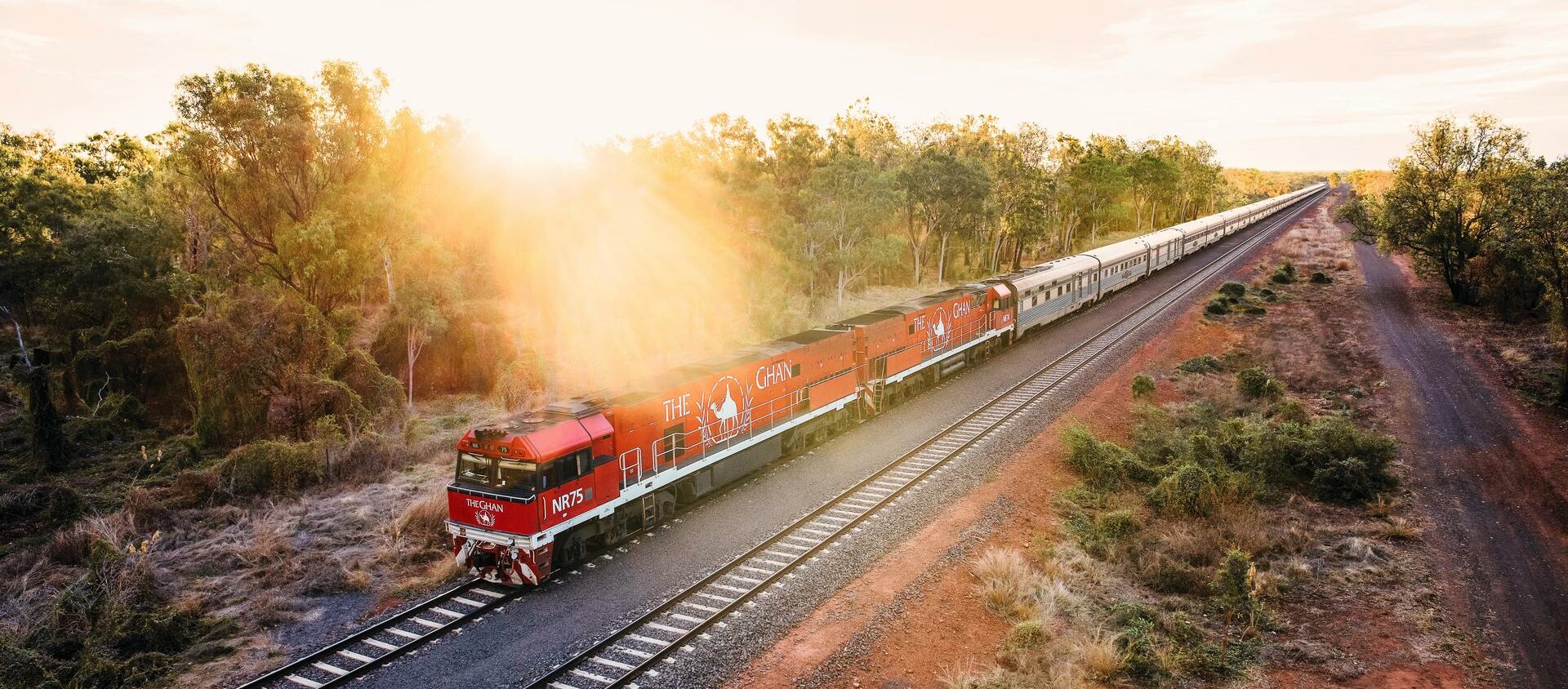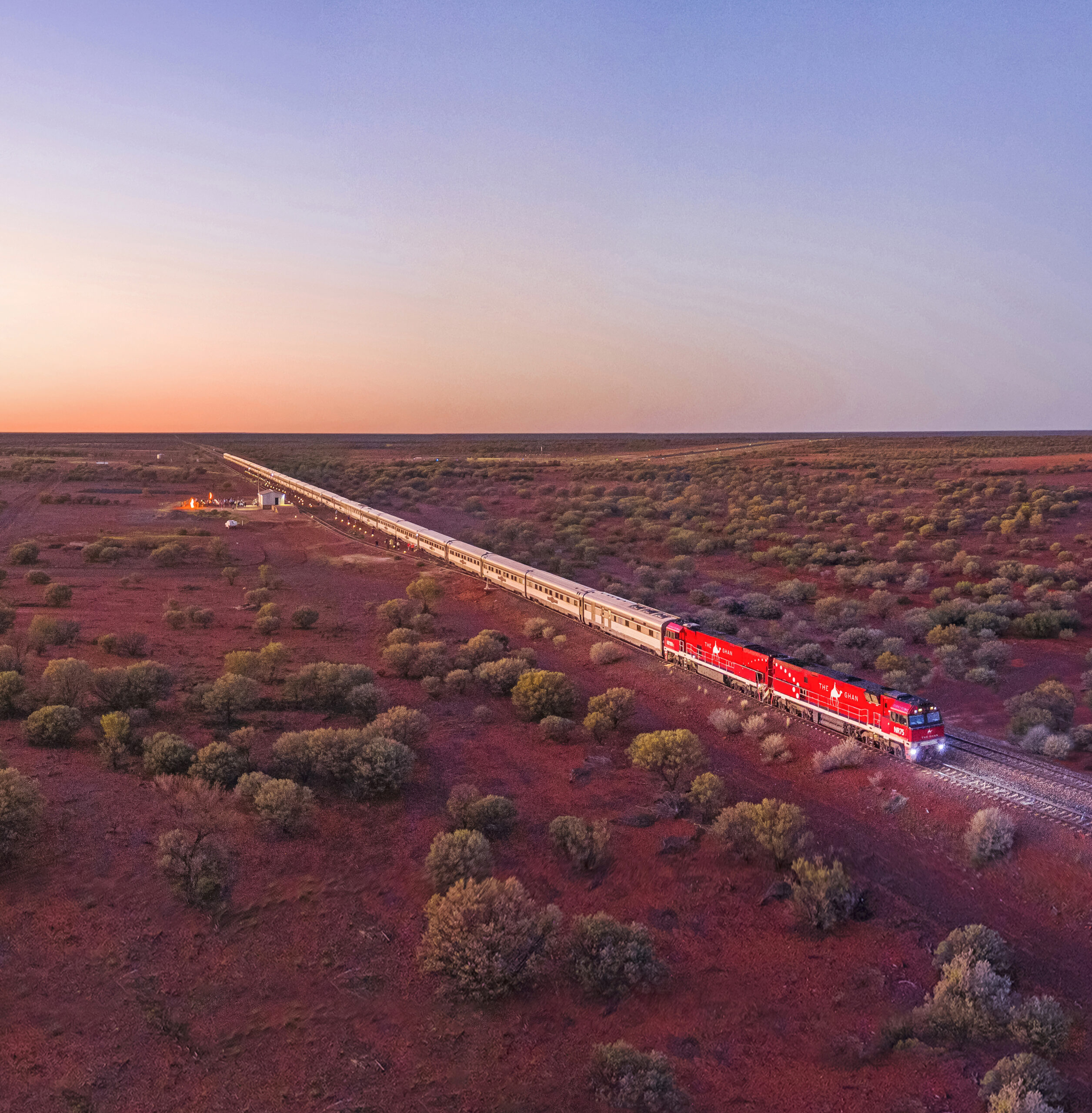


A journey a million years in the making, The Ghan truly embodies the spirit of Australia. This iconic train travels north to south and south to north, linking Adelaide in South Australia with Darwin in the Northern Territory, all while traversing the heart of Australia’s magnificent Red Centre.
With its bold-red locomotive mirroring the rich red earth beneath, The Ghan connects deeply with the outback and the breathtaking scenery that unfolds along its route. It has been taking guests on unforgettable adventures for more than 95 years, making it a beloved symbol of Australian travel.
The Ghan’s camel motif signifies its desert crossings, paying homage to the Afghan cameleers who arrived in Australia in the 1830s. These pioneering desert explorers were immortalised in 1929 when the first steam train, affectionately dubbed ‘The Afghan Express’, travelled from Adelaide to Stuart (later renamed Alice Springs). This historic journey laid the groundwork for what would soon become known as ‘The Ghan’.
Throughout its storied history, The Ghan has played a vital role in transporting servicemen during World War II and has been indispensable for the mining, transport, and agriculture sectors since the 1970s.
Today, The Ghan continues to offer premium, two-night, three-day journeys, with Off Train Experiences in Marla, Alice Springs, and Katherine. For those seeking an even more remarkable adventure, the southbound journey transforms into The Ghan Expedition from April to October each year (March to November in 2026), extending to four epic days and including stops in Katherine and Alice Springs, where guests can enjoy a unique dinner under the stars at the Telegraph Station—often described as the pinnacle of the adventure—before continuing on to Cooper Pedy and Manguri.
Boasting Gold, Gold Premium, and Platinum classes, as well as the upcoming Aurora Australis Suites in 2026, The Ghan can reach up to a kilometre long in peak season, accommodating up to 270 guests on board. The journey features a menu that narrates the story of the regions it traverses, proudly showcasing local produce like barramundi, quandong, and salt bush.
